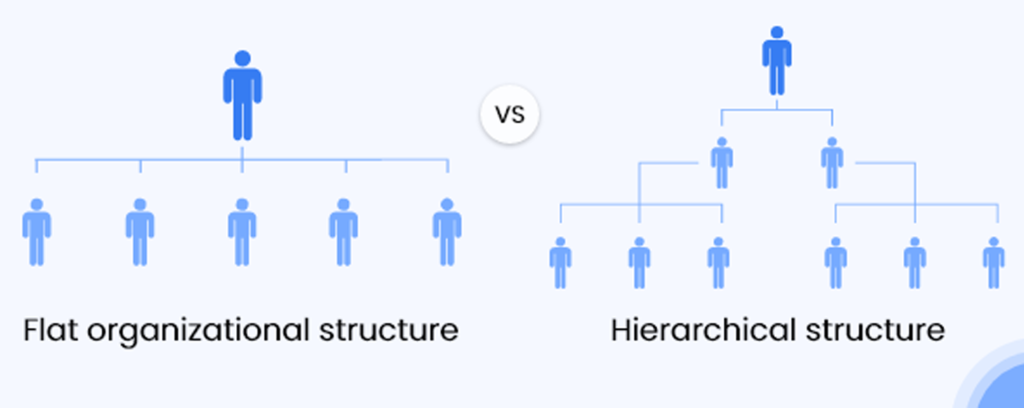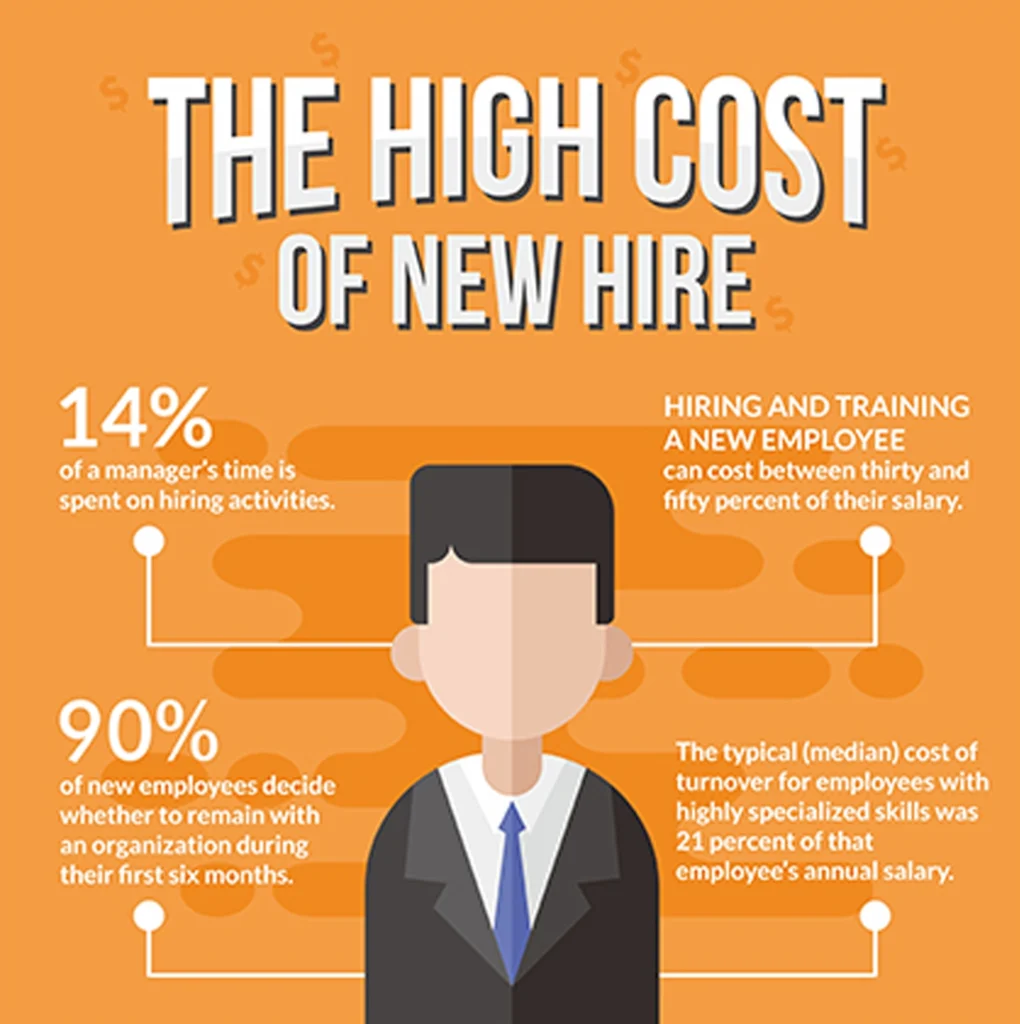How a Flat Organizational Structure Can Benefit Companies
A company’s organizational structure is an important part of its business strategy. Incorporating a flat organizational structure can help your company reach its goals effectively and efficiently.
Your infrastructure affects the dissemination of information, the level of responsibility among your workers, and overall productivity. To ensure you’re reaching your business’s full potential, it’s important to assess your company’s organizational structure and determine whether you’re effectively reaching your goals. While today’s businesses are constantly changing to keep up with evolving trends, consumer needs, and to attract customers with demand generation, half of all change initiatives fail. Only 34% are a definite success.
Keep reading to learn about a flat organizational structure and the benefits of changing to this approach.
Key Takeaways
- A flat organizational structure eliminates a tiered hierarchy and laterally distributes responsibilities.
- While the benefits are far-reaching, there are three main advantages to implementing a flat organizational structure in your company.
- Embracing this structure can help unlock value and help you reach your company’s full potential.
What Exactly is a Flat Organizational Structure?
Many companies use a hierarchical structure to create a chain of command. Workers report to front-line managers, who, in turn, report to middle managers. Those middle managers report to executives. This structure creates a pyramid of authority, control, and communication. On the other hand, a flat organizational structure removes those tiers and reduces the number of management levels. As a result, employees report directly to top-level managers.
A flat organizational structure means the number of people being supervised by each manager is large while the number of managers is small. This may not be ideal for larger companies that need more clarity about who is responsible for certain actions. But for many businesses, this structure is highly beneficial as it can help foster teamwork and motivate employees to excel.

From best lead generation to customer lifecycle marketing, your company’s organizational structure has a far-reaching impact on how your employees and consumers feel about, interact with, and support your company.
3 Benefits of a Flat Organizational Structure
Although many companies prefer to use a tiered hierarchy, here are three reasons to implement a flat organizational structure within your company.
1. Personal Responsibility
A flat organizational structure removes the need for middle management, granting employees more personal responsibility within your company. With more responsibility comes greater accountability. For many, this is a motivator that drives people to become more invested in the business’s overall success. They feel valued and see their contributions as integral to helping their team (and the company) reach its goals.
As a result, they experience higher job satisfaction, leading to employee happiness and increased loyalty. This means they’ll stay in their role longer, saving you money (visible and hidden onboarding costs average $4,425 per employee).

It also means they’re more likely to have higher engagement, collaborate with their co-workers, and build a stronger team. This leads to open discussions and to brainstorm that generates innovation and new ideas to help set your business apart from the competition. All of this helps create a positive employee experience and an environment where people want to work, attracting top talent who will benefit your business.
2. Increased Productivity
A flat organizational structure has more autonomy, allowing information to be shared more easily and efficiently. Streamlining the communication process helps to reduce the chances for employees to receive incomplete or incorrect information. The fewer channels information goes through, the quicker people can apply that material to their role.
This means workers get updates and directives sooner, enabling them to begin work earlier and complete projects more efficiently. The result is higher productivity. When workers are more productive, companies are propelled toward their goals with greater success, and employees gain a more profound sense of accomplishment. This ultimately impacts customer satisfaction, which drives sales, conversions, and overall growth.
3. Lower Costs
Middle management salaries are often the most costly for a company to sustain. By eliminating tiers in the hierarchy, you reduce the number of positions within the organization and save the cost of middle management salaries. Additionally, this saves you the cost of training and benefits.
A flat organizational structure focuses on qualified staff who have a higher satisfaction level and are more likely to remain loyal to your company. This means you’re spending less on training and can allocate more of your money toward business growth. You can support the innovation of new products, upgrade manufacturing equipment, and offer raises to worthy employees. All of this helps contribute to worker morale and loyalty, exponentially saving you money.
Implementing a Flat Organizational Structure
Implementing a flat organizational structure can help your business become more flexible and dynamic as you plan for your company’s future. When considering the implementation of this structure, it’s important to keep the following in mind:
- Include management levels as necessary: A flat organizational structure doesn’t have to eliminate all levels of management. It’s okay to incorporate tiers as needed.
- Encourage collaboration: Provide an environment where people feel safe to share ideas and ask questions. Collaboration leads to innovation and sales growth.
- Provide resources: When granting employees more personal responsibility, you must also provide the resources they need to succeed. If people are able to make an informed decision, they’re more likely to contribute to group discussions that grow your business.
- Set clear expectations: Give people the confidence they need to contribute to their team by clearly communicating what’s expected of them.
- Create training: For employees to feel comfortable making decisions in a flat organizational structure, they have to feel supported. Create training opportunities that give people the knowledge and experience they need to work effectively in their roles.
- Offer growth opportunities: Eliminating a tiered hierarchy doesn’t mean people can’t advance within your company. Create growth opportunities that allow workers to excel and succeed in their field. The following video addresses ways to approach career advancement in flat organizations:
By embracing this structure, you can unlock value and reach your company’s full potential.
Unlock Your Full Potential
Televerde provides marketing and sales solutions to global businesses looking to increase lead generation and solidify customer retention. We can help you reach your company’s full potential by implementing strategic changes that help you meet your unique needs and goals.
Want more resources? The Televerde Resources Library contains tools to help you unlock your full potential.


